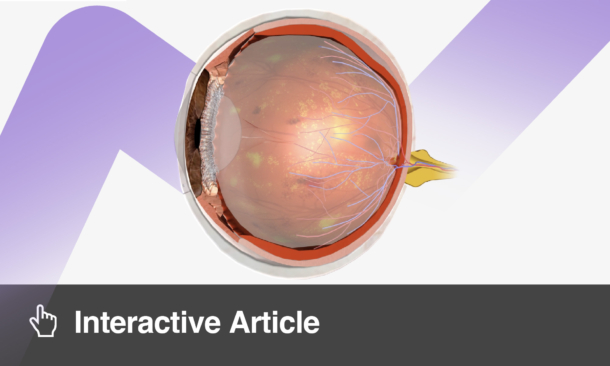COMPARING CURRENT GUIDELINES
Diabetes is predicted to affect 5.5 million individuals by 2030 in the UK alone. There is no known cure for this increasingly common condition and current treatment includes medication, weight loss surgery, and lifestyle changes. Guidelines put in place by societies and organisations help healthcare professionals make informed decisions on appropriate management plans. In the 57th EASD Congress this year, speakers discussed the current guidelines on Type 2 diabetes management and shared the latest clinical trials, explaining how they might shape guidelines in the future.
Christoph Wanner, Division of Nephrology, University Clinic Wurzburg, Germany, opened the session by reviewing the current guidelines on diabetes management, particularly the KDIGO and ESC/EASD guidelines. Guideline recommendations are classified based on the level of evidence behind them. Grading ranges from Class I to Class III, where Class I corresponds to recommended guidelines based on evidence from randomised clinical trials or meta-analyses, and Class III corresponds to not recommended guidelines, which are based on evidence from consensus of opinion or small studies. The recommendation for each class has been carefully worded to indicate how strongly the advice should be taken. Wanner compared these different guidelines to see if they were consistent and to identify any discrepancies.
The speaker shared some specific examples of guidelines that have been widely adopted, notably the recommendation that patients with diabetes should be screened annually for kidney disease by assessing the estimated glomerular filtration rate (eGFR) and urinary albumin to creatinine ratio. This recommendation is universal across all three sets of guidelines, and all physicians adopt this recommendation.
The most important components of the KDIGO guidelines include comprehensive care, glycaemic monitoring and targets, lifestyle interventions, antihyperglycaemic therapies, and approaches to management. Comprehensive care can be divided into three sections: fundamental standard of care for all patients, most prescribed medication, and finally, antiplatelet therapies. The first section includes smoking cessation, nutrition, exercise, lipid management, glycaemic control, and blood pressure control. This fundamental standard of care is universally accepted in all guidelines. Overall, the guidelines concerning comprehensive care agree with each other. However, there are instances where the guidelines do not unanimously agree. This discrepancy occurs regarding another component of the KDIGO guidelines: glycaemic monitoring and targets.
The EASD guidelines state that targeting HbA1C (<7% OR <53 mmol/mol) is recommended to decrease microvascular complications in patients with diabetes as Class IA. However, interestingly, there is a slight deviation in the KDIGO guidelines, as they class this recommendation as IC. The KDIGO guidelines state that they recommend an individualised HbA1C target ranging from <6.5% to <8.0% in patients with diabetes and non-dialysis-dependent chronic kidney disease (CKD). So, not only does this KDIGO guideline have a different class compared to the EASD guideline, but they also have a marginally different HbA1C range.
Additionally, Wanner discussed lifestyle interventions for Type 2 diabetes management and the importance of measuring protein intake, salt intake, and physical activity in patients. However, this is not solidly recommended across all guidelines and has a low grading in class. Wanner implied that this may be because related trials are old and not as controlled as they are today. Lastly, another example where the guidelines vary is regarding anti-glycaemic therapies in patients with diabetes and CKD. The KDIGO guidelines recommend that metformin should be used as a first-line treatment for hyperglycaemia in Type 2 diabetes where the eGFR is >30 mL. In comparison, other guidelines recommend including sodium–glucose co-transporter-2 (SGLT2) inhibitors in the treatment regimen. This is another example of how recommendations vary between different guidelines.
Wanner explained that treatment is determined by patient preferences, comorbidities, eGFR, and cost. He described how different organisations class guidelines differently due to varying evidence. In a closing statement, Wanner emphasised how the guidelines need to be more consistent and expressed his enthusiasm for the new guidelines expected in October.
UPDATED EVIDENCE IN SGLT2 INHIBITORS AND MINERALOCORTICOID RECEPTOR ANTAGONISTS SHAPING FUTURE GUIDELINES
Hiddo Heerspink, University Medical Centre Groningen, Netherlands, shared the latest data from clinical trials on SGLT2 inhibitors and mineralocorticoid receptor antagonists (MRA). Heerspink expressed his belief that guidelines need to be fluid and will continue to change in the future especially as new clinical trials take place.
Currently, the KDIGO guidelines recommend the use of metformin and SGLT2 inhibitors in the treatment of Type 2 diabetes in CKD. From clinical trials, it is now well-known that SGLT2 inhibitors can improve cardiovascular and kidney outcomes, although this was not always thought to be the case. Initially, SGLT2 inhibitors were not recommended due to their low efficacy. However, evidence from the CREDENCE trial¹ showed that these drugs are effective, even in individuals with a low eGFR. The trial demonstrated that the SGLT2 inhibitor canagliflozin reduced the risk of the primary outcome by 30%. Comparing the efficacy of SGLT2 inhibitors with a placebo, renal outcomes were improved at every dose. However, despite reducing the relative risk, there are still numerous patients who progress to end-stage kidney disease after 2.9 years and the primary endpoint remains the same, emphasising the importance of additional treatments.
Since the results of the CREDENCE trial, many scientists have been interested in the mechanism behind canagliflozin. SGLT2 is overexpressed in patients with Type 2 diabetes, resulting in glucose reabsorption. However, with more glucose reabsorption in the nephrons, there is also more sodium ion reabsorption. As a result, fewer sodium ions are delivered to the macular densa and, consequently, this reduces the release of adenosine, promotes vasodilation of the afferent arteriole, leading to intraglomerular pressure and hyperfiltration seen in early diabetes. Inhibiting SGLT2 to restore the tubuloglomerular feedback would reduce glomerular hyperfiltration and preserve kidney function.
Heerspink shared another study, the DAPA-CKD trial,² that tested the effect of dapagliflozin on CKD in patients. The results had a similar positive outcome to the CREDENCE trial, and dapagliflozin reduced the primary and secondary outcomes such as cardiovascular disease. Following this, the speaker evaluated the safety profile of dapagliflozin compared to the placebo. Results showed that more patients with diabetes experienced adverse events and were more likely to discontinue treatment. Surprisingly, dapagliflozin had a greater effect on females than males, but Heerspink cautioned that this could be a chance finding and larger studies need to be performed.
Moving on, Heerspink reviewed MRAs in Type 2 diabetes, specifically finerenone, which is a novel non-steroidal receptor antagonist. Various factors such as a high-salt diet or oxidative stress can cause activation of receptors, which leads to activation of inflammatory and fibrotic factors leading to renal damage. Blocking the receptors to prevent the binding of the ligand to the receptor would prevent these damaging outcomes. Two large clinical trials, FIDELIO DKD and DIGARD DKD, developed receptor antagonists for blocking this cell signalling pathway. The combined data sets results of 13,000 patients, named FIDELITY, showed that finerenone significantly reduced the risk of the kidney composite outcome by 23% and reduced cardiovascular risk by 14%.
In his concluding remarks, Heerspink shared his suggestion that finerenone and SGLT2 could be combined as one treatment in the future due to their varying benefits. Finally, he concluded that SGLT2 and MRA are effective therapies to reduce renal failure in patients with Type 2 diabetes and expressed his belief that it is important to implement these new findings into future guidelines and clinical practice.








